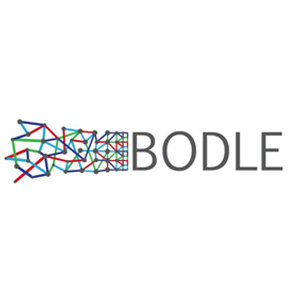Meet our CODE_n CONTEST Finalists 2016: Bodle Technologies from United Kingdom
Another meeting with one of our finalists is on the agenda! In the third part of our series, we talked with Peiman Hosseini, Co-Founder and Chief Technology Officer of Bodle Technologies, who told us all there is to know about the UK based startup. Bodle provides advanced optoelectronic solutions for revolutionary displays and smart windows.
What is Bodle Technologies all about? How did you come up with the idea?
 Peiman: It all started from a breakthrough in optoelectronics published by our founders in Nature. Our unprecedented technology can filter, steer or dim light at a flick of a switch and most importantly, without consuming any power after the switching is completed. The research has received broth popular and scientific press coverage across the world from India and Australia to Europe and the US such as the MIT Technology review, New Scientist, The Economist, Fortune, BBC news and many others. More recently, we managed to acquire a considerable amount of venture capital funding and spun out Bodle Technologies, a startup company that aims to commercialize various applications based on our invention.
Peiman: It all started from a breakthrough in optoelectronics published by our founders in Nature. Our unprecedented technology can filter, steer or dim light at a flick of a switch and most importantly, without consuming any power after the switching is completed. The research has received broth popular and scientific press coverage across the world from India and Australia to Europe and the US such as the MIT Technology review, New Scientist, The Economist, Fortune, BBC news and many others. More recently, we managed to acquire a considerable amount of venture capital funding and spun out Bodle Technologies, a startup company that aims to commercialize various applications based on our invention.
“Digital Disruption“ – that’s the motto of this year’s CODE_n CONTEST. What makes your solution innovative, what makes it disruptive?
Peiman: Bodle’s entirely solid state technology could enable a new generation of flexible, ultra-thin, reflective displays, with thicknesses in the range of nanometre and ultra-high resolution. Several features distinguish this technology from what is currently available: such displays will be naturally ultra-high in resolution with pixels in the nanometre region. As a comparison, the latest generation LCD / OLED displays have pixels more than 600 times bigger than Bodle’s proof of concept. Bright colours are created by interference without using filters, dyes or organic materials. This feature allows the creation of deeply saturated colours with a gamut larger than that of LCD and even OLED displays. The switching time is also amazingly short; the average switching speed of current LCD display is in the µs range, 100 to a 1000 times slower than our proof of concept. Because of the reflective nature of Bodle’s display technology, no back illumination is necessary in order to clearly perceive an image and power consumption is drastically reduced. Such displays would be readable even in bright sunlight – something that the current colour displays are not capable of.

Peiman Hosseini (left) and Harish Bhaskaran, both Co-Founders of Bodle (© University Oxford Isis Innovations 2)
You’re one of the 13 finalists in the Photonics contest cluster. Which challenges do you think young companies have to face in this sector? How do you handle these challenges?
Peiman: Photonics is an exciting sector with plenty of possibility for young companies to achieve something truly disruptive. Unfortunately, creating and manufacturing a photonic technology is often a real challenge for companies with limited funds and resources. Partnering up early with established players is one way to circumvent this problem.
If we understand this correctly, by reducing the amount of power needed, we believe you could revolutionize more than just one market. Where do you see the future for your technology beyond what you are working on now?
Peiman: Infrared radiation accounts for 50% of the sun’s energy that reaches earth. Active surfaces that can reflect or absorb infrared radiation at a flick of a switch could potentially revolutionize thermal management in buildings and transportation systems. Bodle’s technology could save energy in hot weather by reflecting infrared radiation back to the atmosphere, and in cold weather by absorbing heat and releasing it inside where is needed. More importantly, modulating infrared light need not affect the visible properties of the material. Thus the smart window will look nearly colour-less and largely transparent – something that could be a game-changer in this industry.
Finally, using a flexible, compliant, elastic material as such layer builds a device that dramatically changes its colour in response to electrical, optical or mechanical stimuli. Such a device could find a whole new plethora of exciting applications such as in next generation of plastic currencies, smart security tags and colour responsive force sensors.
Thank you for taking the time to talk to us!






Write a comment